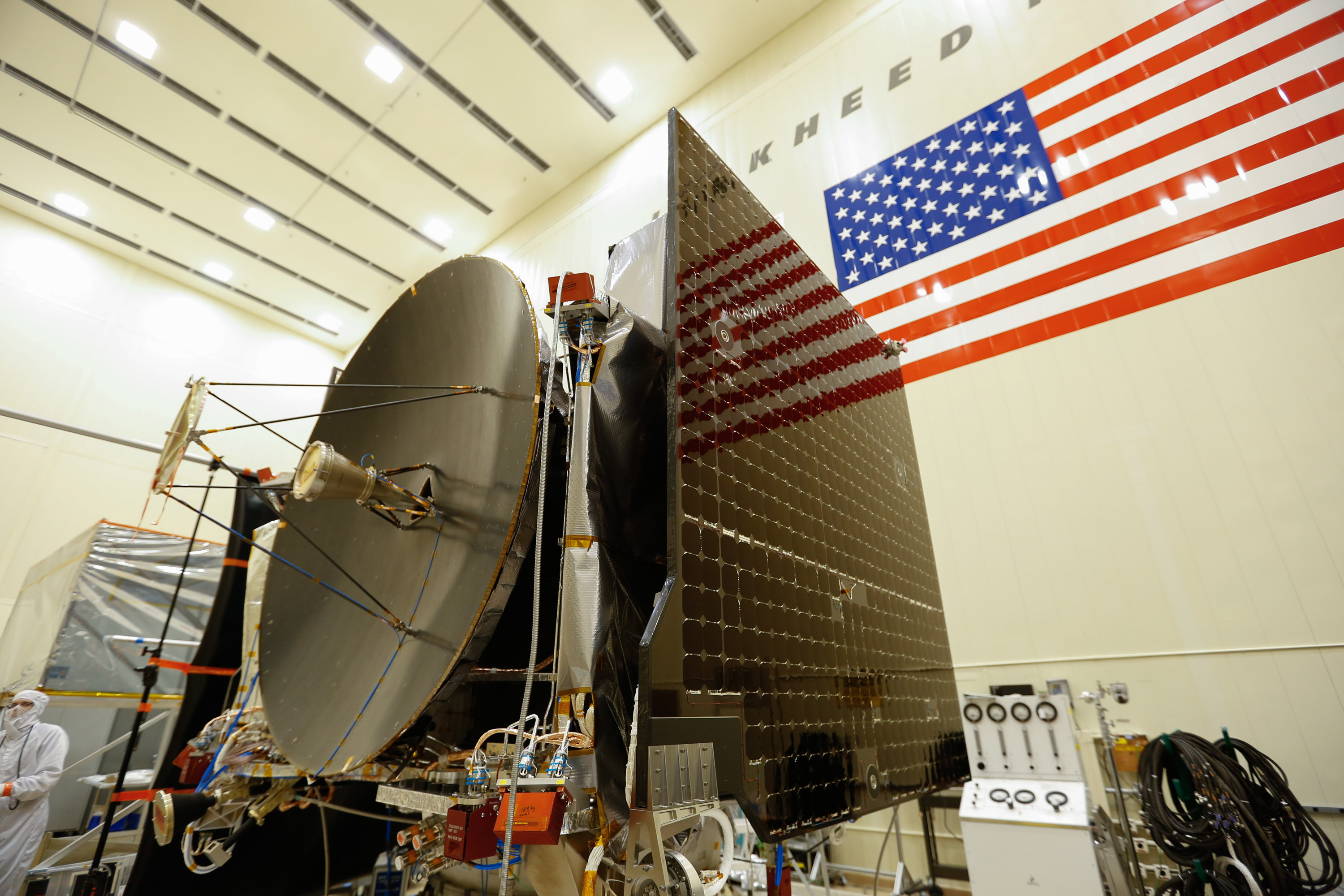NASA Asteroid-Sampling Probe Fully Built, Enters Test Phase

NASA's first asteroid-sampling spacecraft is now fully assembled.
Engineers and technicians at the aerospace firm Lockheed Martin have finished building the space agency's OSIRIS-REx probe, which is scheduled to launch toward the potentially hazardous asteroid Bennu in September 2016.
"This is an exciting time for the program, as we now have a completed spacecraft and the team gets to test drive it, in a sense, before we actually fly it to Bennu," said Rich Kuhns, the OSIRIS-REx program manager at Lockheed Martin Space Systems, which will also provide flight operations for the mission. [Osiris-Rex: NASA's Asteroid Sample-Return Mission in Pictures]
"The environmental test phase is an important time in the mission, as it will reveal any issues with the spacecraft and instruments while here on Earth, before we send it into deep space," Kuhns said in a statement.
This "test drive" will take place over the next five months at a Lockheed Martin facility near Denver, company representatives said. If all goes according to plan, the OSIRIS-REx probe will then be shipped to NASA's Kennedy Space Center (KSC) in Florida next May to begin final launch preparations. (The spacecraft will launch from Cape Canaveral Air Force Station, which is next-door to KSC.)
The $800 million OSIRIS-REx mission — whose name is short for Origins-Spectral Interpretation-Resource Identification-Security-Regolith Explorer — is scheduled to rendezvous with the 1,840-foot-wide (560 meters) Bennu in 2018.
The spacecraft will then snag at least 2.1 ounces (60 grams) of material from the carbon-rich space rock and send the sample back to Earth in 2023. Analsysis of these asteroid pieces should shed light on the early days of the solar system, NASA officials have said.
Breaking space news, the latest updates on rocket launches, skywatching events and more!
The mission will also help researchers gain experience that could come in handy should humanity need to nudge a potentially dangerous asteroid away from Earth in the future. Indeed, rendezvousing with an asteroid is a key step in any deflection campaign.
Bennu itself is potentially hazardous: There's a 0.04 percent chance that the space rock will slam into Earth between 2175 and 2199, NASA researchers say.
OSIRIS-REx is NASA's first asteroid-samping mission, but it's not the first one worldwide to deliver space-rock pieces to Earth: Japan's Hayabusa mission returned tiny bits of the asteroid Itokawa to Earth in 2010. And last December, Japan launched Hayabusa 2, which will return samples from the asteroid 1999 JU3 to Earth in late 2020, if all goes according to plan.
Follow Mike Wall on Twitter @michaeldwall and Google+. Follow us @Spacedotcom, Facebook or Google+. Originally published on Space.com.

Michael Wall is a Senior Space Writer with Space.com and joined the team in 2010. He primarily covers exoplanets, spaceflight and military space, but has been known to dabble in the space art beat. His book about the search for alien life, "Out There," was published on Nov. 13, 2018. Before becoming a science writer, Michael worked as a herpetologist and wildlife biologist. He has a Ph.D. in evolutionary biology from the University of Sydney, Australia, a bachelor's degree from the University of Arizona, and a graduate certificate in science writing from the University of California, Santa Cruz. To find out what his latest project is, you can follow Michael on Twitter.


